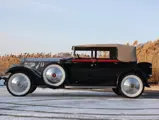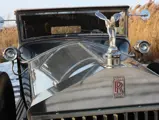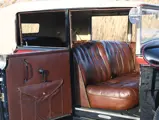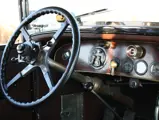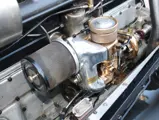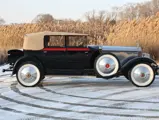
1928 Rolls-Royce Phantom I Newmarket Convertible Sedan by Brewster
{{lr.item.text}}
$99,000 USD | Sold
{{bidding.lot.reserveStatusFormatted}}
- Handsome Brewster Newmarket coachwork
- Original chassis, engine, and body
- Complete history from new
- Recent cosmetic restoration of a lovely, low-mileage original car
40/65 hp, 7,668 cc OHV six-cylinder engine, three-speed manual transmission, solid front axle with semi-elliptical leaf springs and live rear axle with cantilever leaf springs, and four-wheel servo-assisted mechanical drum brakes. Wheelbase: 146.5 in.
In order to better serve American clients, Rolls-Royce established a branch factory at Springfield, Massachusetts, after World War I. The Silver Ghost model went into production there in 1919, at first nearly identical to the British-built version. Over the years, the Ghost became more Americanized, with left-hand steering, center-change three-speed gearbox, dual-coil ignition, and suspension modified for a smoother ride.
Rolls-Royce introduced the “New Phantom,” the successor to the long-running but aging Silver Ghost, in 1925. Although the chassis was an evolution of the Ghost, the engine was new, with a detachable overhead-valve cylinder head and a larger displacement of 7,668 cubic centimeters. In 1928, an aluminum cylinder head was substituted for cast iron. The New Phantom was later designated “Phantom I” after a Phantom II was introduced in 1929. With a longer stroke than its predecessor, the Phantom I had tremendous low-speed torque and could accelerate from a walking pace to top speed, all in top gear.
The Newmarket Convertible Sedan offered here, chassis number S393KP, is one of 67 of this style built for Springfield Phantom Is. Factory records indicate that it was originally delivered to John B. Ellsworth of Simsbury, Connecticut, chairman of the board of the Ensign-Bickford Company, a manufacturer of detonating cords for explosives, on May 11, 1929. Subsequently, it was acquired in November 1939 by Dorothy and Fred Hudson, residents of the Hotel Webster in New York City, and then sold to Henry L. Benedetto of Elmont, Long Island, in March 1949.
On November 21, 1950, the car was sold to Daniel Dinsmore of Orange, New Jersey. It next passed on March 22, 1951, to the late Mortimer Ryon of Ithaca, New York, a well-known early collector on the East Coast and the car’s earliest enthusiast owner. In 1952, it was sold to Hayward C. Carleton of Norwell, Massachusetts, who owned it until 1980; between 1980 and this year, just three further custodians have enjoyed the use of the car, one for a full 25 years.
The factory records also confirm matching engine, chassis, and body numbers from new. Other documents include a copy of a very early title document from the first owner and an instruction leaflet for the “Sesame” combination lock to the running board tool locker, clearly an original feature. The original Rolls-Royce key fob and dash roundel are inscribed with its chassis number.
In previous ownership, the car received sensible re-commissioning after a long period of storage, including a full flushing and cleaning of the fuel, grease, and oiling systems, a carburetor rebuild, and a full sorting of the electric system. The brakes were gone through and overhauled and adjusted where necessary. For practicality, signal lights have been added, as well as a 6-to-12 volt converter. The windshield wiper has been rebuilt and fitted with a variable speed switch.
The car has had a complete re-trim in sumptuous Andrew Muirhead Scottish leather in chestnut color, matching the original door cappings and dash. More recently, the paintwork has been redone in the striking livery in which it is presented today, the hood polished and all the nickel brightwork returned to its former glory through careful polishing of its age-old tarnish. All this work has enabled the car to be used with some regularity and without concern for its reliability. More major excursions have included attending the Phantom I Society meeting in 2007, a round trip of more than 800 miles, and exhibition at the Hamptons, Americana/Manhasset, and Lewisboro Concours d’Elegances in New York State.
This is an extremely authentic, well presented, and attractive example of the Springfield Phantom I.







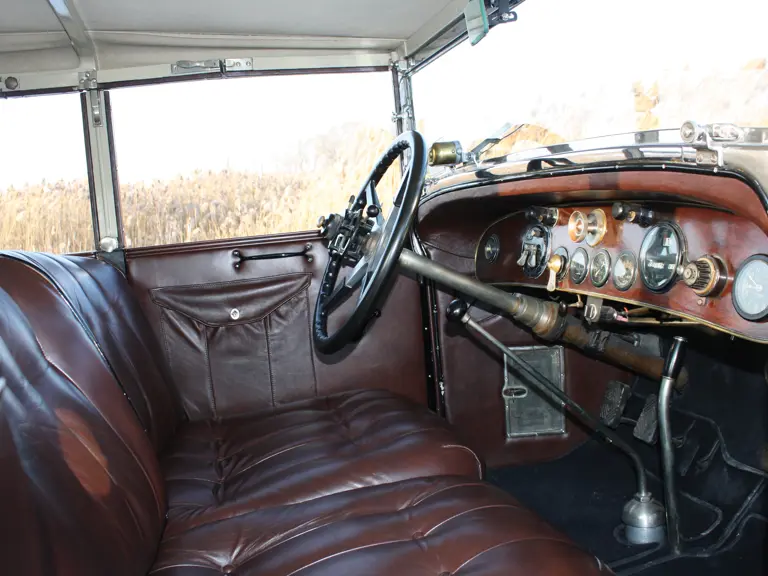
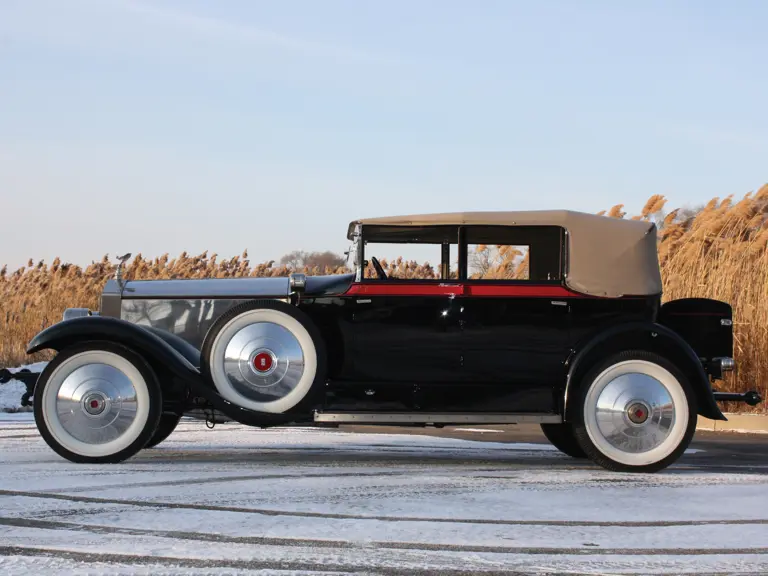
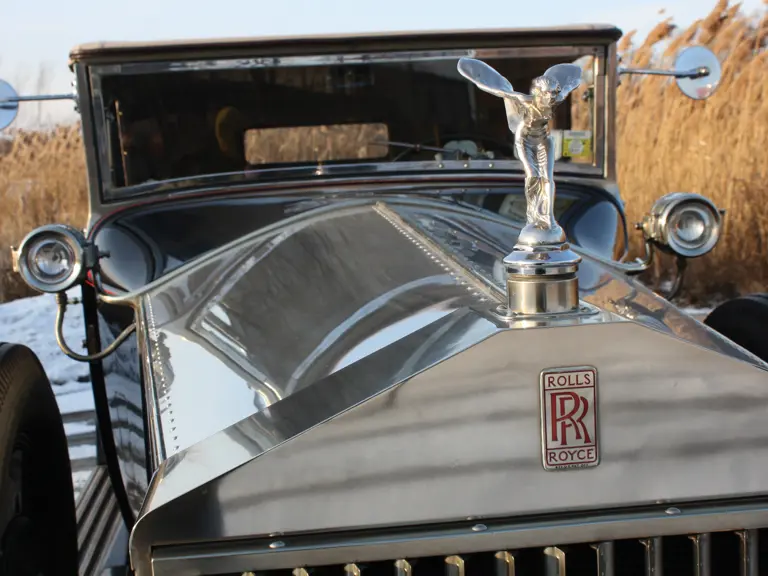

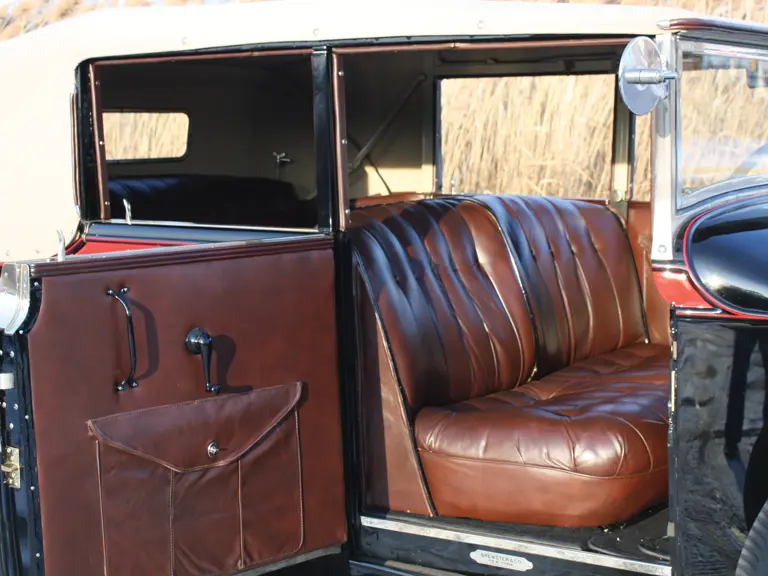

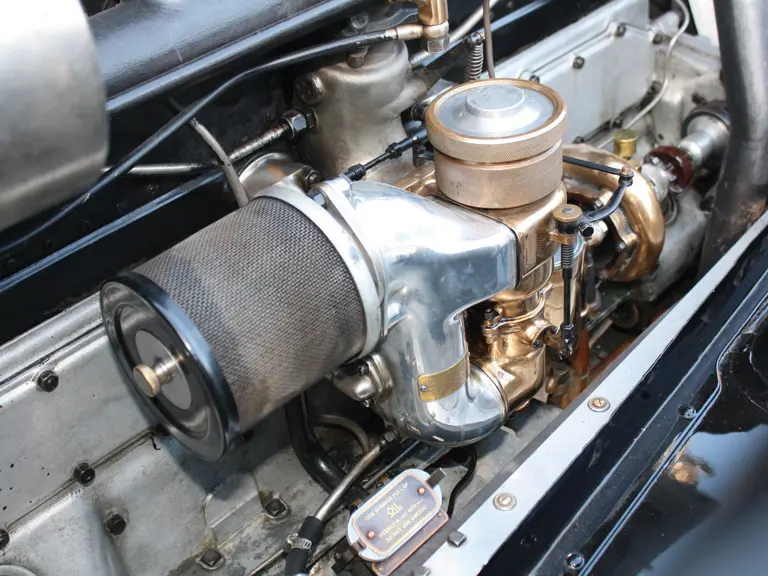
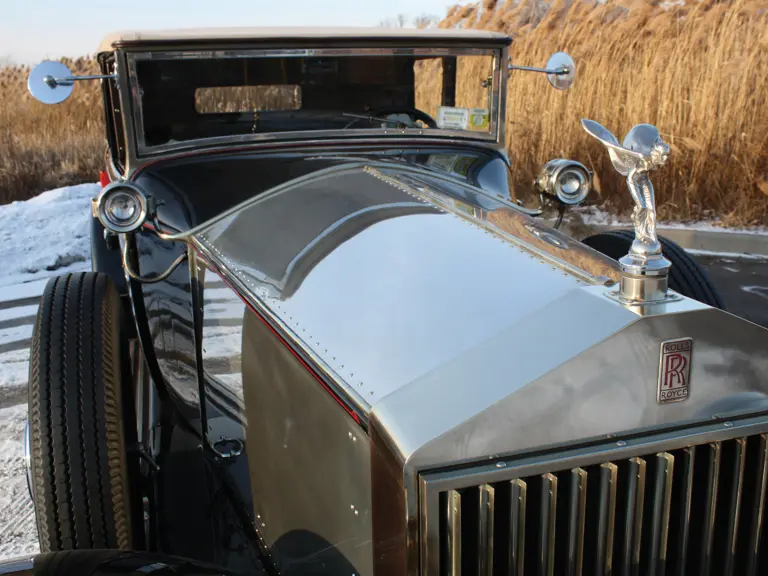

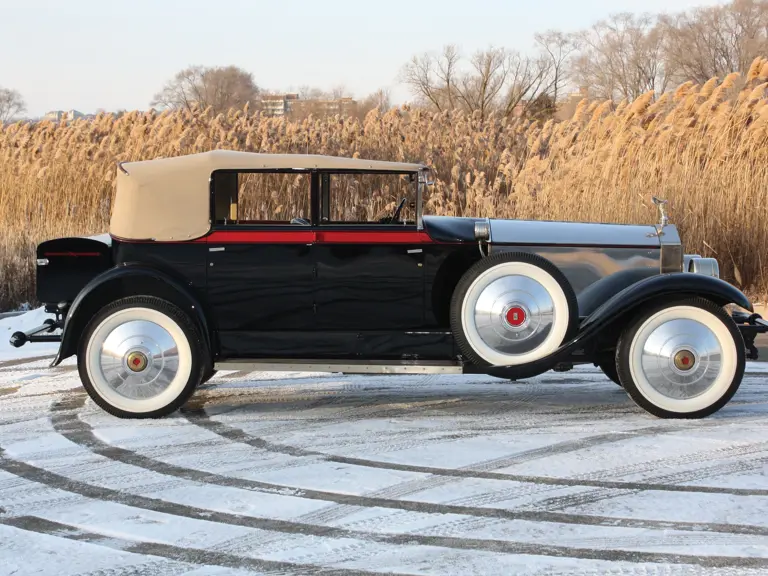
 | Phoenix, Arizona
| Phoenix, Arizona



